Tough time for trees: Heat, drought, and storms take their toll
Our record-breaking heat wave coupled with widespread severe thunderstorms made this a rough week for trees in Lower Michigan and surrounding areas.
How dry I am
I have frequently commented that homeowners and landscapers should pay particular attention to irrigating recently-planted trees and shrubs during periods of drought. The conditions we have seen this summer take this a step further and we are starting to see signs of stress even on established trees.
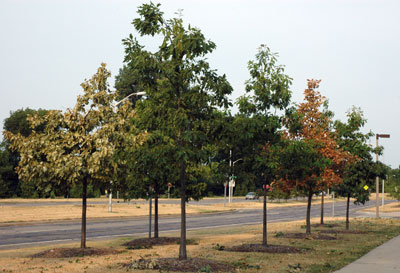
Even established trees are showing signs of stress this summer.
Some key things to watch for are wilting or curling leaves on deciduous trees and drooping leaders on conifers.
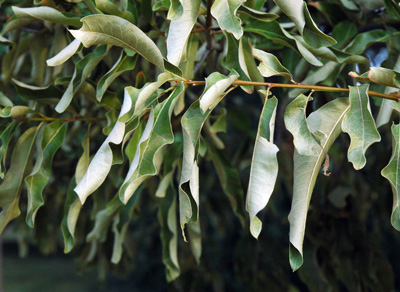
Curling leaves are a common sign a tree needs water as soon as possible!
Both deciduous trees and conifers may begin to drop leaves or needles under severe stress. We are also seeing some leaf scorch due to high temperatures. Leaf scorch is a high temperature injury that occurs when leaves are unable to cool themselves by transpiration when soil water availability is limited.
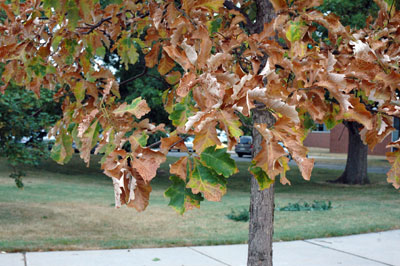
Leaf scorch is often a result of drought combined with high temperatures.
In terms of long-term injury, most deciduous trees can recover from occasional wilting, leaf scorch, or leaf drop, provided we get some rain or they can be irrigated. Repeated severe stresses, however, can take their toll and trees may eventually succumb.
Stormy weather
In case the severe heat and drought weren’t enough, many locations in Michigan have also had to contend with severe storms and in some cases, multiple storms in the same location. Most, but not all, trees that fail during storms have some pre-existing conditions that weaken them before high winds come through. In many cases, the potential problem can be identified before the tree falls such as obvious decay, large branches with narrow attachment angles, or other structural problems.
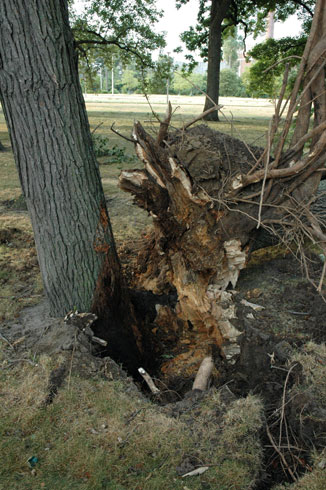
The root system of the tree on the right water was restricted
by the tree to its left, resulting in a weakened root system.
Sometimes the defect that results in a tree failing may not become apparent until the tree is on the ground.
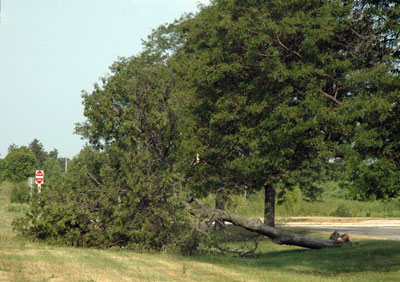
This honeylocust tree fell during the July 5 storm in East
Lansing. The tree appeared sound but had root rot.
One of the most common questions that arises after bouts of severe weather is “Is this tree damaged beyond repair?” The answer depends on a several factors including extent of damage, tree location, overall tree condition and species. The National Arbor Day Foundation has an excellent on-line article “Can these trees be saved?” that can help homeowners determine if their tree is worth saving. Remember, working around downed or damaged trees can be extremely dangerous. Unless you are 100 percent sure you can do the job safely, check the yellow pages for an International Society of Arboriculture (ISA) certified arborist in your area or visit http://www.isa-arbor.com/.
Additional information
- MSU Extension's Drought Resources



 Print
Print Email
Email


